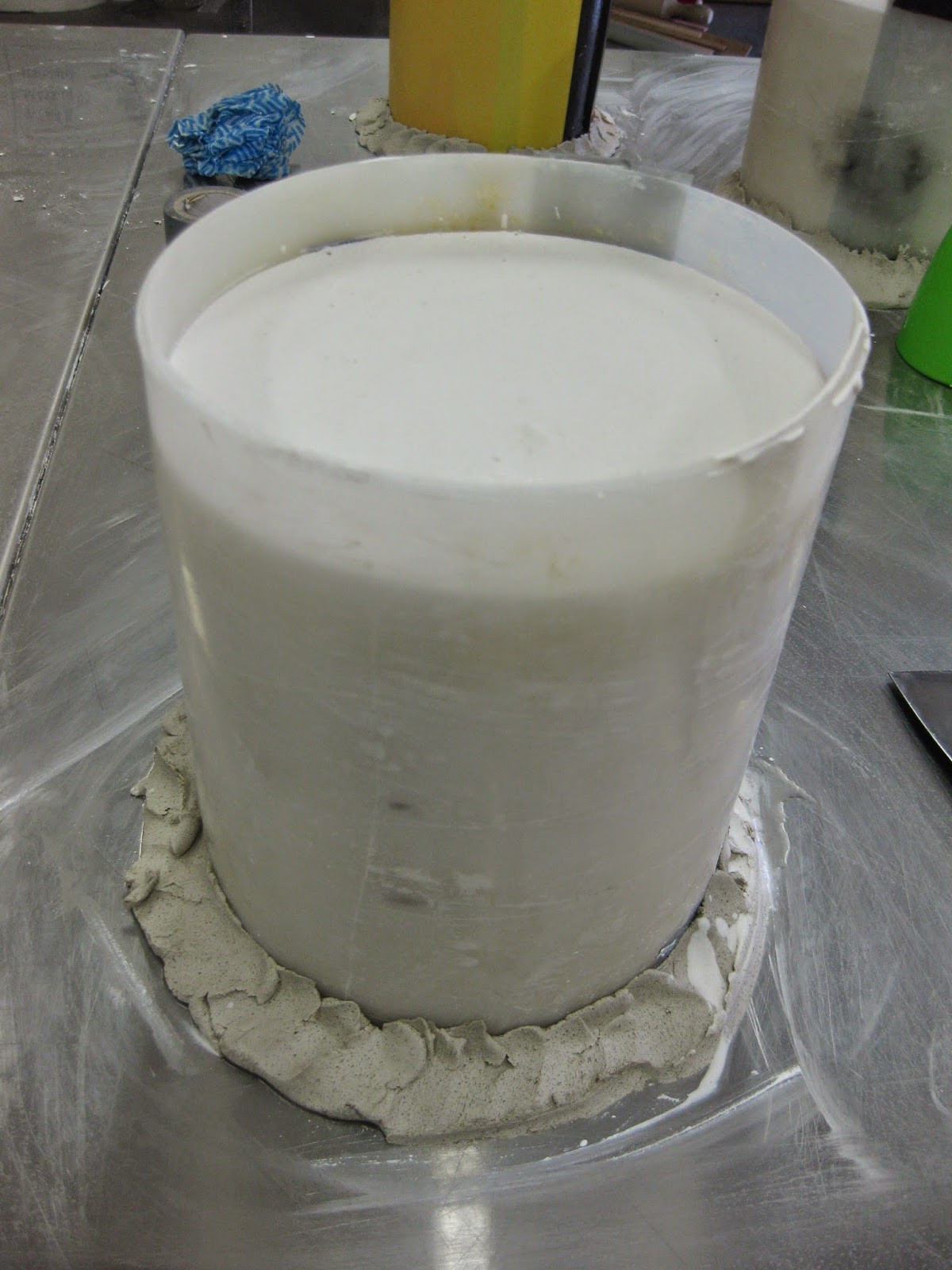This week I've been working in the Glazing Studio making forms from slip-cast slabs. Wednesday and Thursday were full of frustrations but by Friday, some of my forms were behaving and I felt more confident with the process.
The work began with making the slip from casting powder. This was a messy and dusty process whereby 25 kg of casting powder was added to water in a large plastic bin. This was mixed with an industrial size 'stick blender', then sieved. We added black, blue and yellow to three separate containers. Previously we had poured our plaster slabs in readiness for this work.
We made patterns on the plaster slab by painting, slip trailing, dripping, sponging, etc. with the coloured slips. The un-coloured slip was poured over this to form a slab. The slabs took approximately 30 minutes to set. They could then be peeled back and flipped over to reveal the pattern, much like flipping a crepe. The slab is now ready for formwork. After much experimentation, I found cutting simple curves or squarish shapes worked best. By joining curves, squares or rectangles, it was possible to make a vessel into which wet slip was poured to form the base. Timing is everything. Too dry, the slab would crack and too wet, it would not support itself.
In the photo, you can see my forms with poured bases drying on the plaster slab.




